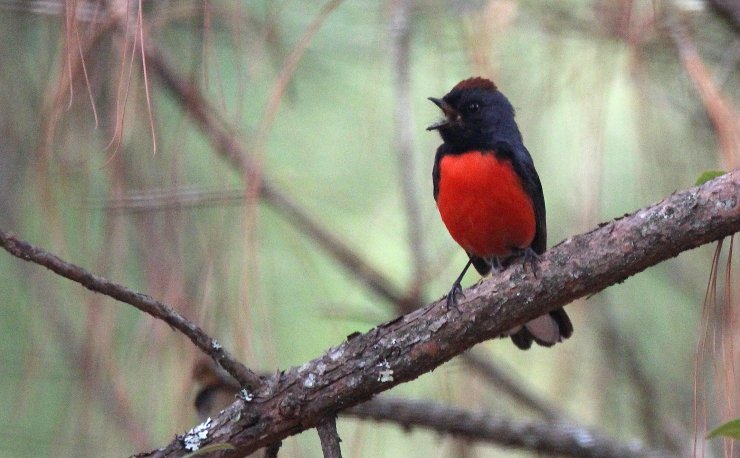
I have commented before in my posts that most of our Warblers here in central Mexico never actually warble. This tendency is so marked that the Spanish name for Wood Warblers, Chipe, comes not from their mating songs, but from their typical feeding calls: cheep… cheep… cheep.
Still, there are a few notable exception to this rule, even here in Michoacán. This is in spite of the fact that, while my life list for the state includes 28 Wood Warblers, a full 17 of these are migrants. So you can count on those Warblers never warbling here. That still leaves 11 Warblers that breed in Michoacán. But do they warble?
Our three local Yellowthroats certainly do. I am pretty sure I’ve never heard the fairly rare Gray-crowned Yellowthroat’s song, but Merlin confirms that it is indeed a warble. Our Black-polled and Common Yellowthroats, however, are prodigious singers, and I often hear them warbling from lakeside reeds.
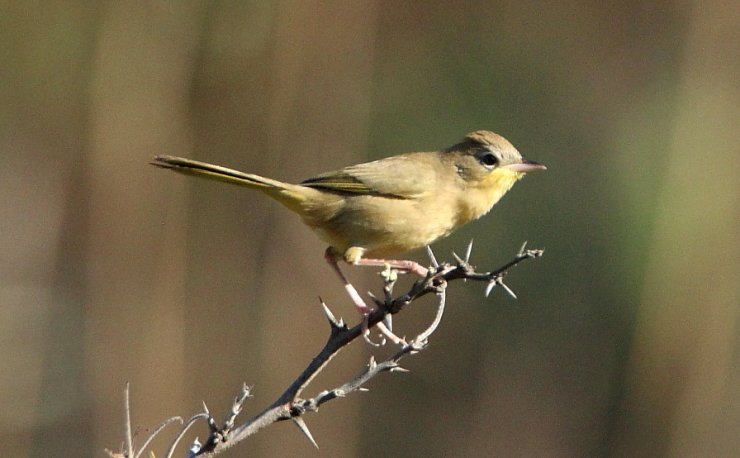 The Gray-crowned Yellowthroat produces “a rich to slightly scratchy warble”. But not this immature specimen… yet.
The Gray-crowned Yellowthroat produces “a rich to slightly scratchy warble”. But not this immature specimen… yet.
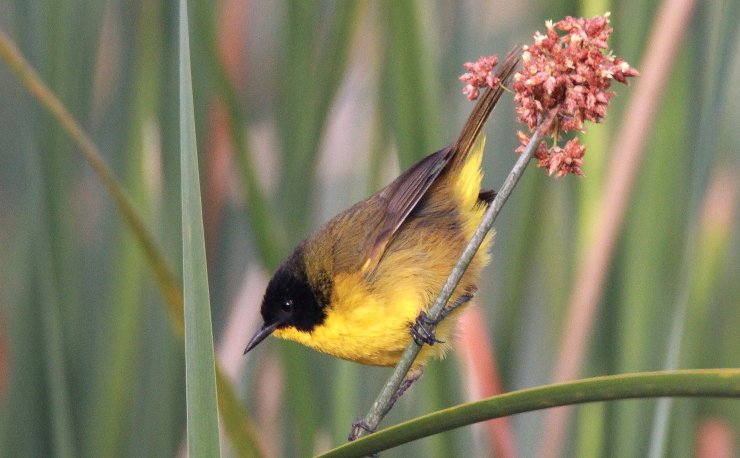 While the Black-polled Yellowthroat says: chree-chree-chree-chree-chree… chi-chi-chi-chi-chi…
While the Black-polled Yellowthroat says: chree-chree-chree-chree-chree… chi-chi-chi-chi-chi…
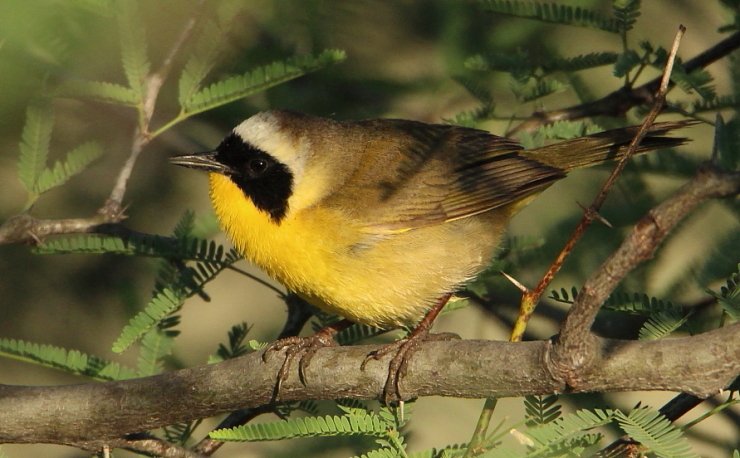 w whee-ch-too whee-ch-too!
w whee-ch-too whee-ch-too!
The Yellow Warbler can also be heard giving its short warble near water in our area, although I don’t see it all that often, and hear it sing even less. Yellow Warblers are altitudinal migrants within the state of Michoacán, wintering in the lowlands and summering in the highlands. But my experience suggests there is a fair amount of geographical overlap between the two ranges in my area. Like the Common Yellowthroat, the Yellow Warbler breeds no further south than the central Mexican highlands.
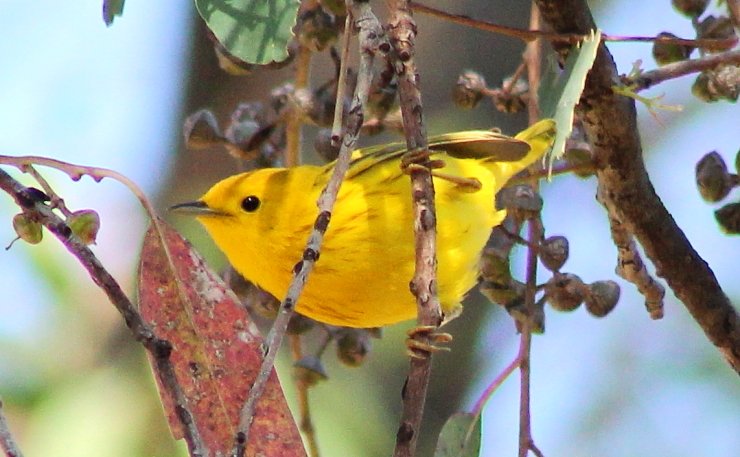 swee swee-swee-swee-sweeziweet
swee swee-swee-swee-sweeziweet
I must admit that I had the idea the Grace’s Warbler, common in our pine forests, were also at the southern edge of their breeding range here. But as I started to research this post, I was reminded that I actually live in the center of this Warbler’s range. It does breed in the U.S. southwest, but it is a permanent resident in western Mexico and parts of Central America. And yes, it has a warble of sorts, although its song is much simpler than that of many other Warblers.
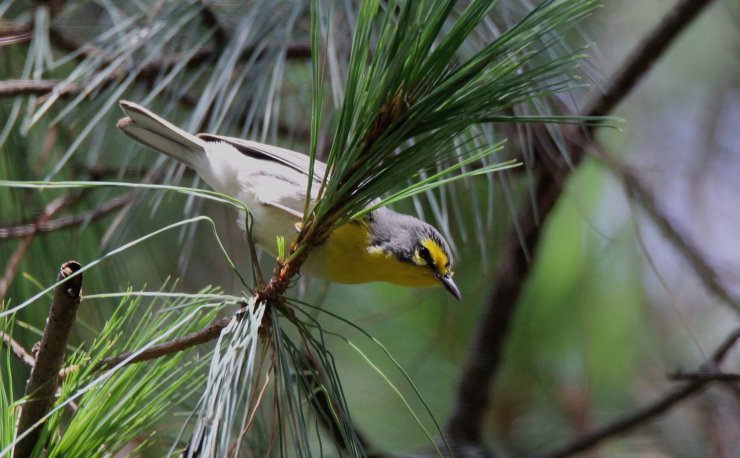 chi-chi chi-chi-chit chi-chi-chi-chi-chi-chu
chi-chi chi-chi-chit chi-chi-chi-chi-chi-chu
Then there are the truly southern Warblers. The adorable Red Warbler lives only in Mexico. It has a high, thin warble, but I usually only hear its high, soft tsii call.The Golden-browed Warbler can be found from Mexico down to Honduras, and like the Red Warbler, its warble is rarely heard, while its buzzy tsssi call is quite common. Both are mostly found in very high, moist forests.
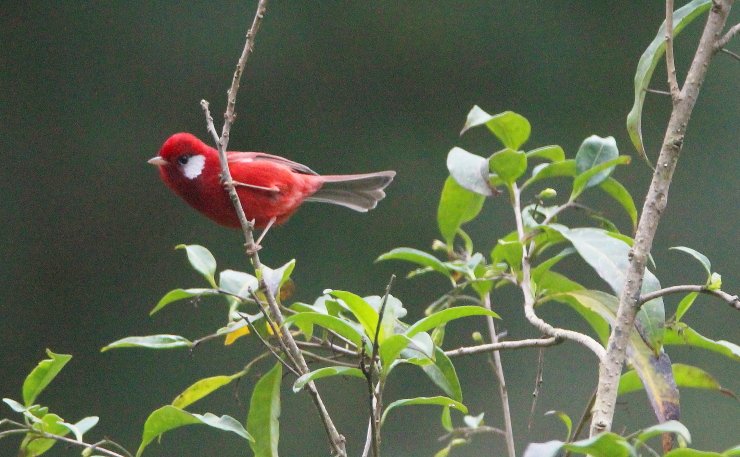 tsii
tsii
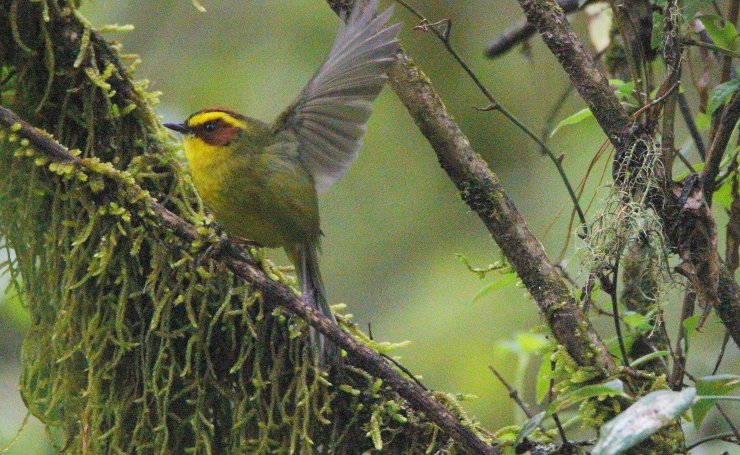 tsssi
tsssi
The Crescent-chested Warbler can be found in somewhat drier pine-oak forests, also from Mexico to Honduras, and it is one Wood Warbler with no warble at all. Its insect-like buzz reminds me most of the Grasshopper’s Sparrow’s song.
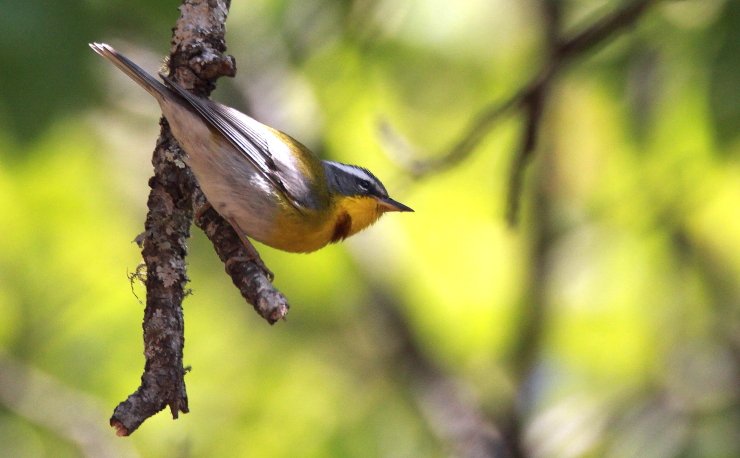 dzzzzzzr
dzzzzzzr
But the highly social Rufous-crowned Warbler, found from Western Mexico all the way down to northern South America, is one Warbler that really knows how to warble. I love to hear its song in our dry canyons. I almost always see the Rufous-crowned Warbler in groups of two or three.
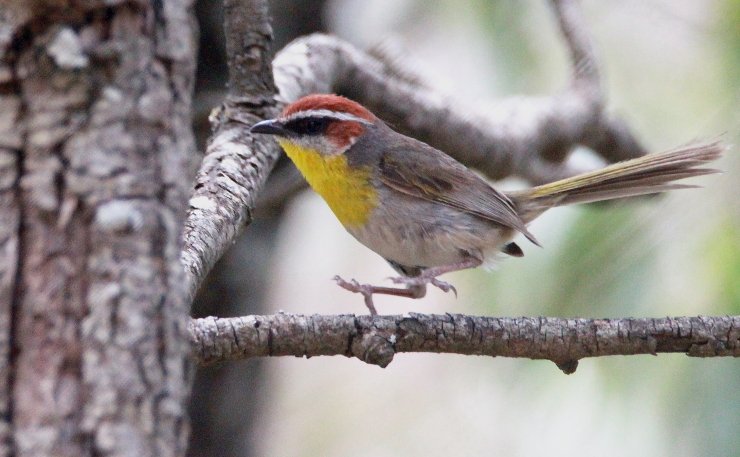 chi-chi-chi-chi-chi-ssiu-ssiu-ssiu-ssiu
chi-chi-chi-chi-chi-ssiu-ssiu-ssiu-ssiu
Finally, there are our local Redstarts. The Painted Redstart has a lovely warble, but I rarely hear it. However, in the right habitat I can actually get tired of hearing the lilting song of our endemic Slate-throated Redstart. This is one more Wood Warbler that does love to warble!
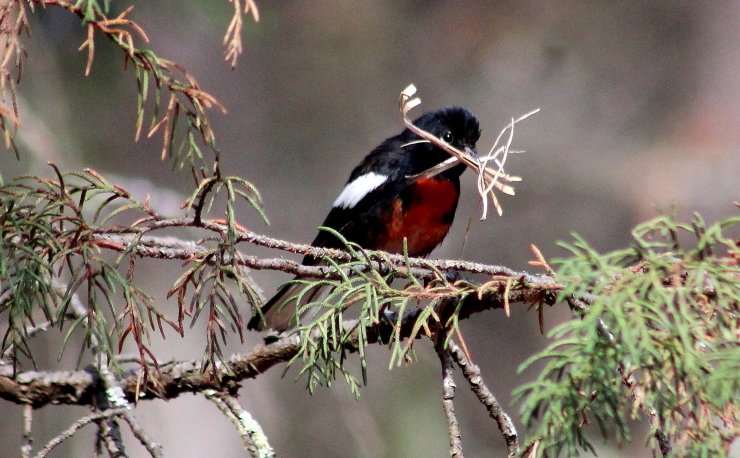 mmmf… Sorry, my beak is full.
mmmf… Sorry, my beak is full.
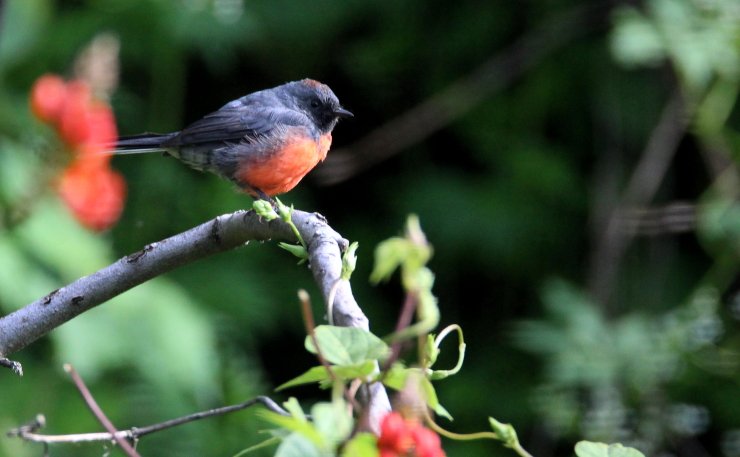 s-wee s-wee s-wee s-wee s-wee s-chi s-chi s-chi
s-wee s-wee s-wee s-wee s-wee s-chi s-chi s-chi
(All song transcriptions are as found in Howell’s A Guide to the Birds of Mexico and Northern Central America — except for that Painted Redstart!)













Leave a Comment